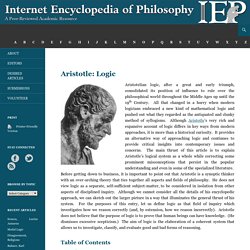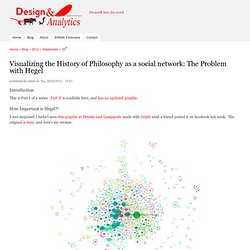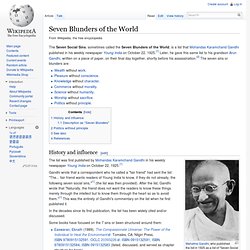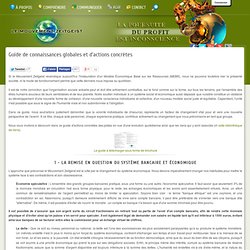

Noumena. Noumenon. Philosophical concept Etymology[edit] The Greek word νοούμενoν nooúmenon (plural νοούμενα nooúmena) is the neuter middle-passive present participle of νοεῖν noeîn "to think, to mean", which in turn originates from the word νοῦς noûs, an Attic contracted form of νόος nóos[a] "perception, understanding, mind.

"[3][4] A rough equivalent in English would be "something that is thought", or "the object of an act of thought". Historical predecessors[edit] Regarding the equivalent concepts in Plato, Ted Honderich writes: "Platonic Ideas and Forms are noumena, and phenomena are things displaying themselves to the senses... Kantian noumena[edit] Overview[edit]
Aristotle: Logic. Aristotelian logic, after a great and early triumph, consolidated its position of influence to rule over the philosophical world throughout the Middle Ages up until the 19th Century.

All that changed in a hurry when modern logicians embraced a new kind of mathematical logic and pushed out what they regarded as the antiquated and clunky method of syllogisms. Although Aristotle’s very rich and expansive account of logic differs in key ways from modern approaches, it is more than a historical curiosity. It provides an alternative way of approaching logic and continues to provide critical insights into contemporary issues and concerns.
The main thrust of this article is to explain Aristotle’s logical system as a whole while correcting some prominent misconceptions that persist in the popular understanding and even in some of the specialized literature. Philosophy and Logic. Superego. The Indian Sage who developed Atomic Theory 2,600 years ago. John Dalton (1766 – 1844), an English chemist and physicist, is the man credited today with the development of atomic theory.

However, a theory of atoms was actually formulated2,500 years before Dalton by an Indian sage and philosopher, known as Acharya Kanad. Acharya Kanad was born in 600 BC in Prabhas Kshetra (near Dwaraka) in Gujarat, India. His real name was Kashyap. How Different Cultures Understand Time. “Maybe Time Doesn’t Even Exist” Ancient Philosophy Timeline. Philosophy Timeline.
10 Mind-Blowing Theories That Will Change Your Perception of the World. Reality is not as obvious and simple as we like to think.

Some of the things that we accept as true at face value are notoriously wrong. Scientists and philosophers have made every effort to change our common perceptions of it. The 10 examples below will show you what I mean. 1. Great glaciation. Visualizing the History of Philosophy as a social network: The Problem with Hegel. Introduction This is Part I of a series.

Part II is available here, and has an updated graphic. How Important is Hegel?! I was surprised I hadn't seen this graphic at Drunks and Lampposts made with Gephi until a friend posted it on facebook last week. The original is here, and here's my version: Seven Blunders of the World.
The Seven Social Sins, sometimes called the Seven Blunders of the World, is a list that Mohandas Karamchand Gandhi published in his weekly newspaper Young India on October 22, 1925.[1] Later, he gave this same list to his grandson Arun Gandhi, written on a piece of paper, on their final day together, shortly before his assassination.[2] The seven sins or blunders are: History and influence[edit] Mahatma Gandhi, who published the list in 1925 as a list of "Seven Social Sins" (1940s photo) The list was first published by Mohandas Karamchand Gandhi in his weekly newspaper Young India on October 22, 1925.[1] Gandhi wrote that a correspondent who he called a "fair friend" had sent the list: "The... fair friend wants readers of Young India to know, if they do not already, the following seven social sins,"[1] (the list was then provided).

In the decades since its first publication, the list has been widely cited and/or discussed. Mouvement Zeitgeist. Si le Mouvement Zeitgeist revendique aujourd'hui l'instauration d'un Modèle Économique Basé sur les Ressources (MEBR), nous ne pouvons toutefois nier la présente société, ni le mode de fonctionnement périmé que cette dernière nous impose au quotidien.

Il est de notre conviction que l'organisation sociale actuelle peut et doit être activement combattue, sur le fond comme sur la forme, sur tous les terrains, par l'ensemble des êtres humains soucieux de leurs semblables et de leur planète. Notre soutien individuel à un système social et économique aussi dépassé que nuisible constitue un obstacle au développement d'une nouvelle forme de cohésion, d'une nouvelle conscience individuelle et collective, d'un nouveau modèle social juste et équitable. Cependant, l'unité n'est possible que sous le signe de l'humanité vraie et non subordonnée à l'obligation.
Le guide à télécharger sous forme de brochure 1 - La remise en question du système bancaire et économique Ainsi, nous préconisons : The Tao. Why Physicists Are Saying Consciousness Is A State Of Matter, Like a Solid, A Liquid Or A Gas — The Physics arXiv Blog. There’s a quiet revolution underway in theoretical physics.

Tree of the knowledge of good and evil. In Genesis[edit]

Swami Vivekananda on the Secret of Work: Intelligent Consolation for the Pressures of Productivity from 1896. By Maria Popova “Every work that we do… every thought that we think, leaves such an impression on the mind-stuff…”

Understanding the Fibonacci Sequence and Golden Ratio. The Fibonacci Sequence The Fibonacci sequence is possibly the most simple recurrence relation occurring in nature. It is 0,1,1,2,3,5,8,13,21,34,55,89, 144… each number equals the sum of the two numbers before it, and the difference of the two numbers succeeding it. It is an infinite sequence which goes on forever as it develops. The Golden Ratio/Divine Ratio or Golden Mean - The quotient of any Fibonacci number and it’s predecessor approaches Phi, represented as ϕ (1.618), the Golden ratio. This iteration can continue both ways, infinitely.
Self Knowledge Through NumbersQuantified Self. NEWSLETTER 10 SPRING 2014 - Philosophy Cosmos.